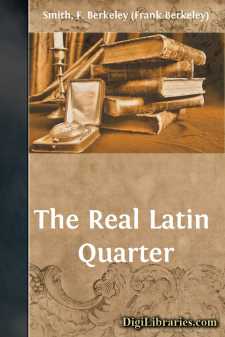Categories
- Antiques & Collectibles 13
- Architecture 36
- Art 48
- Bibles 22
- Biography & Autobiography 813
- Body, Mind & Spirit 142
- Business & Economics 28
- Children's Books 15
- Children's Fiction 12
- Computers 4
- Cooking 94
- Crafts & Hobbies 4
- Drama 346
- Education 46
- Family & Relationships 57
- Fiction 11828
- Games 19
- Gardening 17
- Health & Fitness 34
- History 1377
- House & Home 1
- Humor 147
- Juvenile Fiction 1873
- Juvenile Nonfiction 202
- Language Arts & Disciplines 88
- Law 16
- Literary Collections 686
- Literary Criticism 179
- Mathematics 13
- Medical 41
- Music 40
- Nature 179
- Non-Classifiable 1768
- Performing Arts 7
- Periodicals 1453
- Philosophy 64
- Photography 2
- Poetry 896
- Political Science 203
- Psychology 42
- Reference 154
- Religion 513
- Science 126
- Self-Help 84
- Social Science 81
- Sports & Recreation 34
- Study Aids 3
- Technology & Engineering 59
- Transportation 23
- Travel 463
- True Crime 29
The Real Latin Quarter
Categories:
Description:
Excerpt
“Cocher, drive to the rue Falguière”—this in my best restaurant French.
The man with the varnished hat shrugged his shoulders, and raised his eyebrows in doubt. He evidently had never heard of the rue Falguière. “Yes, rue Falguière, the old rue des Fourneaux,” I continued.
Cabby’s face broke out into a smile. “Ah, oui, oui, le Quartier Latin.”
And it was at the end of this crooked street, through a lane that led into a half court flanked by a row of studio buildings, and up one pair of dingy waxed steps, that I found a door bearing the name of the author of the following pages—his visiting card impaled on a tack. He was in his shirt-sleeves—the thermometer stood at 90° outside—working at his desk, surrounded by half-finished sketches and manuscript.
The man himself I had met before—I had known him for years, in fact—but the surroundings were new to me. So too were his methods of work.
Nowadays when a man would write of the Siege of Peking or the relief of some South African town with the unpronounceable name, his habit is to rent a room on an up-town avenue, move in an inkstand and pad, and a collection of illustrated papers and encyclopedias. This writer on the rue Falguière chose a different plan. He would come back year after year, and study his subject and compile his impressions of the Quarter in the very atmosphere of the place itself; within a stone’s throw of the Luxembourg Gardens and the Panthéon; near the cafés and the Bullier; next door, if you please, to the public laundry where his washerwoman pays a few sous for the privilege of pounding his clothes into holes.
It all seemed very real to me, as I sat beside him and watched him at work. The method delighted me. I have similar ideas myself about the value of his kind of study in out-door sketching, compared with the labored work of the studio, and I have most positive opinions regarding the quality which comes of it.
If then the pages which here follow have in them any of the true inwardness of the life they are meant to portray, it is due, I feel sure, as much to the attitude of the author toward his subject, as much to his ability to seize, retain, and express these instantaneous impressions, these flash pictures caught on the spot, as to any other merit which they may possess.
Nothing can be made really real without it.
F. Hopkinson Smith.
Paris, August, 1901.
IN THE RUE VAUGIRARD
Like a dry brook, its cobblestone bed zigzagging past quaint shops and cafés, the rue Vaugirard finds its way through the heart of the Latin Quarter.
It is only one in a score of other busy little streets that intersect the Quartier Latin; but as I live on the rue Vaugirard, or rather just beside it, up an alley and in the corner of a picturesque old courtyard leading to the “Lavoir Gabriel,” a somewhat angelic name for a huge, barn-like structure reeking in suds and steam, and noisy with gossiping washerwomen who pay a few sous a day there for the privilege of doing their washing—and as my studio windows (the big one with the north light, and the other one a narrow slit reaching from the floor to the high ceiling for the taking in of the big canvases one sees at the Salon—which are never sold) overlook both alley and court, I can see the life and bustle below.
...


